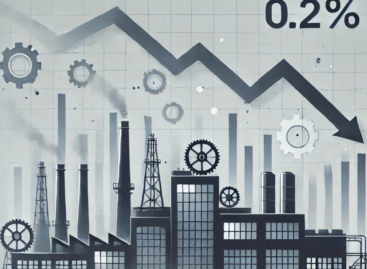Back to the future with Hungary’s economy
Világgazdaság organised a conference titled ‘Hungarian Economic Summit 2016’, where experts were trying to answer the question: What will be the world like in 10 years’ time? András Inotai, a researcher from the Institute of World Economics at the Hungarian Academy of Sciences (MTA), was the first speaker. He told that we can be sure about three trends for the next 10 years. 1. Mutual dependence in every field – goods, services, market, labour force. 2. Successful economic decisions can’t be made without political, institutional, legal, social and psychological surveys done in advance. 3. Time has speeded up – quick and accurate decisions are needed as there is no time for corrections. Mr Inotai calculates with a 3-percent annual growth and his view is that the growth will slow down in emerging economies such as China and Brazil. International trade will remain one of the driving forces of economic growth. The emerging middle class will be the new driver of demand all over the world. It can be a problem that although 100 percent of the capital is globalised, only 3 percent of the labour force works in places other than their home country. In the future the key factor is going to be competitiveness.
Árpád Kovács, president of the Fiscal Council opined that the worldwide growth rate wouldn’t be higher than 1-1.5 percent and Hungary needs to surpass this. In his view it is possible if the central bank continues its supportive policy in the next two years. At the moment low energy and raw material prices have a favourable effect on the economy, but this situation is unlikely to last very long. Until 2023 EU funding will be the biggest boost to Hungary’s economy – we should use it well. Minister for National Economy Mihály Varga told: he and the government expect that Central Europe will play a more important role in the world’s economy in the next few years. Thanks to its close relationship with Germany, the region recovered from the recession faster. This region has really good chances if the countries can establish good economic cooperation with each other. Hungary’s export performance is good and we have managed to pay back some of our debt. What is more, more than half of Hungarian debt is in Hungarian hands now. Fewer people are unemployed than before and the inflation rate is low, while consumption has grown.
After the speakers a roundtable discussion followed, which was opened by Corvinus University of Budapest professor Péter Ákos Bod. He told that the type of growth that has been happening since the recession and is based on cheap but quality labour force seems to be coming to an end. Hungary needs a new economic model if we wish to stay on our feet. Mr Inotai remarked that the big question about the future is: Who will invest? At the moment 20 percent fewer investments are realised than before 2008. This in part is the result of capital issues and in part it is the result of not having enough qualified workers. KAVOSZ Zrt. CEO László Krisán examined the current economic situation from an entrepreneur’s perspective. He told that the use of EU funding in the Hungarian SME sector was a great failure: in his view 60-70 percent of the money was spent ineffectively or used for wrong purposes. 10-15 years ago Hungarian enterprises started their businesses without considerable experience and they haven’t had time yet to educate the new generation of entrepreneurs, who would have all the necessary skills for starting their businesses. However, there are signs of development; the only problem is that in 10 years’ time there won’t be as a many financial resources as there are today, therefore funding needs to be used well now!
Related news
Related news
Recognition of Consumer Protection Excellence: Honoring the Best of 2024
This year’s outstanding consumer protection officers and special award recipients…
Read more >KSH: industrial production decreased by 0.2 percent in October
In October, the volume of industrial production fell by 0.2…
Read more >Technological advancements and business travel
The latest research from International Workplace Group (IWG), the leading…
Read more >





